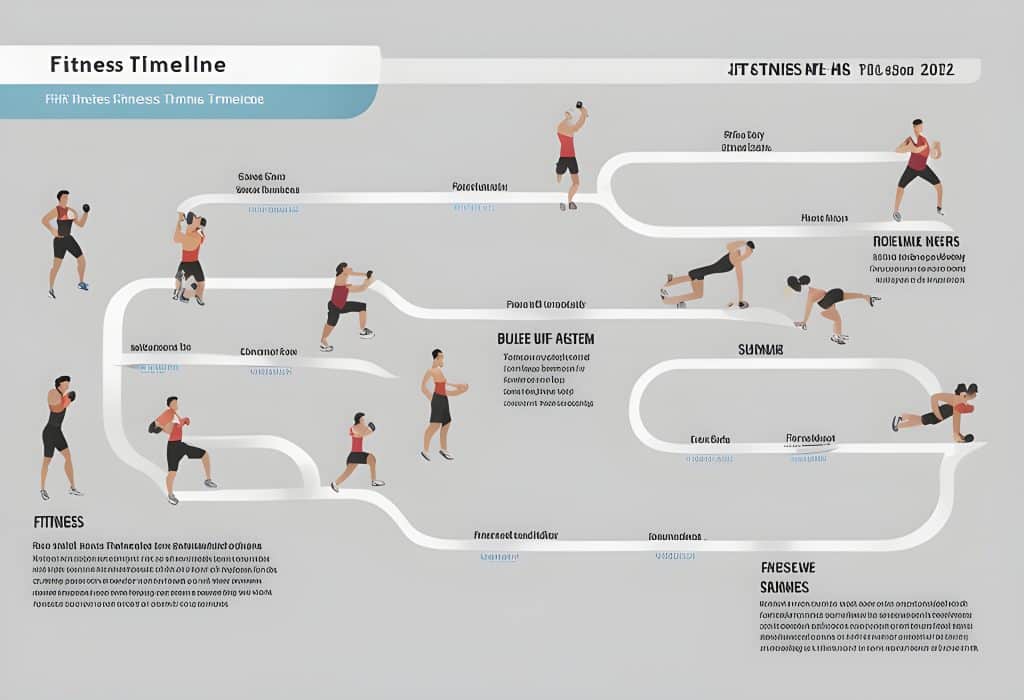Embarking on a fitness journey requires a strategic mindset. Beyond enthusiasm, a well-crafted plan is essential for Success. Let’s delve into 15 strategies designed to help you establish achievable fitness goals, create an effective progress-tracking plan, and maintain persistent motivation.
1. Define Clear Objectives:
Starting your fitness journey demands clarity. Ask yourself, “What specific changes do I want to see?” Whether it’s shedding excess weight, building muscle tone, or boosting overall endurance, defining clear objectives is the first pivotal step.
Example: If your goal is to build muscle tone, a clear objective could be defining specific muscle groups to target, such as sculpted arms or a stronger core
2. Setting Measurable Targets to Attain Your Fitness Goals
Transform vague aspirations into quantifiable targets. Instead of a broad goal like “lose weight,” aim for accuracy, such as “shedding 10 pounds.” Measurable targets provide tangible metrics that serve as checkpoints for your progress.
Example: Instead of aiming to “get fit,” set a measurable target like “complete a 5K run in under 30 minutes” to track your progress
3. Break Down Goals into Smaller Steps:
The path to fitness excellence often involves breaking down larger goals into manageable, actionable steps. This approach not only demystifies the seemingly impossible but also ensures consistent, achievable progress.
Example: If your goal is weight loss, smaller steps could include weekly meal planning, gradually increasing workout intensity, and staying consistent with daily walks.
4. Create a Realistic Timeline:

Understanding that fitness is a journey, not a race, is crucial. Formulate a timeline that aligns with your lifestyle, taking into account the ebb and flow of everyday challenges. A realistic timeline fosters sustainable progress.
Example: Instead of expecting rapid results, set a realistic timeline like losing 1-2 pounds per week, acknowledging that sustainable changes take time.
5. Focus on Consistency Over Intensity:
Consistency is the bedrock of sustainable fitness. Regular, moderate efforts are more effective and maintainable than sporadic, intense bursts of activity. Establishing habits that you can maintain is key to long-term Success.
Example: Consistently engaging in 30 minutes of moderate exercise daily is more sustainable than sporadically engaging in intense workouts that may lead to burnout.
6. Combine Cardio and Strength Training:
Proper fitness is a balance between cardio and strength training. The variety not only keeps workouts interesting but also ensures comprehensive health benefits. Cardiovascular health and muscular strength should go hand in hand.
Example: Incorporate a mix of activities like running or cycling for cardiovascular health and strength training exercises like squats and lunges for muscle development.
7. Prioritize Recovery:
Embrace the importance of Recovery in your fitness routine. Sufficient sleep, rest days, and proper nutrition allow your body to recover and prepare for the next challenge.
Example: Schedule rest days between intense workouts to prevent overtraining, ensuring your body has ample time for muscle recovery.
8. Track Progress with Metrics:
Objectivity is your ally in the fitness journey. Regularly assess your progress through objective metrics like weight, body measurements, or workout performance. These metrics serve as navigational tools on your fitness map.
Example: Use a fitness app to track the number of push-ups or the duration of your plank, providing concrete data to gauge improvement over time
9. Celebrate Achievements:
Acknowledge and celebrate every achievement, no matter how small. Recognizing your efforts boosts confidence and reinforces a positive mindset, propelling you toward your larger goals.
Example: Celebrate reaching a fitness milestone, like completing your first 5K, by treating yourself to a relaxing spa day or enjoying a healthy, delicious meal.
10. Adjust Goals as Needed:
Flexibility is key. Life is dynamic, and unforeseen challenges are inevitable. The ability to adjust your goals gracefully is a sign of adaptability, not failure.
Example: If a sudden work commitment affects your workout schedule, adjust by incorporating shorter, more intense workouts to maintain consistency.
11. Find an Accountability Partner:
Share your fitness journey with a trusted companion. An accountability partner provides support, encouragement, and shared motivation, turning the journey into a collaborative effort.
Example: Pair up with a friend for regular workout sessions or join a fitness class together, creating a supportive environment.
12. Join Fitness Communities:
Immerse yourself in the wealth of knowledge and motivation that fitness communities offer. Engaging with like-minded individuals creates a supportive atmosphere where challenges become collective triumphs.
Example: Participate in online fitness forums or local fitness classes to connect with others, share experiences, and gain valuable insights.
13. Incorporate Enjoyable Activities:
Fitness shouldn’t be a chore. Infuse enjoyment by choosing activities that resonate with you. Whether dancing, hiking, or engaging in a team sport, pleasure in movement sustains motivation.
Example: If you enjoy dancing, consider joining a dance class or incorporating dance workouts into your routine for a fun and effective exercise.
14. Visualize Success:
Tap into the power of visualization. Craft a mental image of yourself achieving your fitness goals. Visualization is a potent tool to reinforce your commitment and cultivate a positive mindset.
Example: Imagine yourself crossing the finish line of a challenging race or envision a sense of accomplishment after completing a demanding workout.
15. Reassess and Reframe:
Regularly revisit and reassess your fitness goals. If circumstances change, be willing to reframe your objectives to align with evolving priorities. This adaptability is a hallmark of a resilient fitness mindset.
Example: If a medical condition alters your exercise capabilities, reframe your goals to focus on activities that accommodate your health while promoting fitness.
Conclusion:
Armed with these 15 strategies, your fitness journey transforms into a well-crafted adventure. Each strategy contributes to a tapestry of sustainable habits, lasting motivation, and the realization of a healthier, more vibrant version of yourself.












[…] Mastering Fitness Success: A Comprehensive Guide to 15 Strategies for Realistic… […]